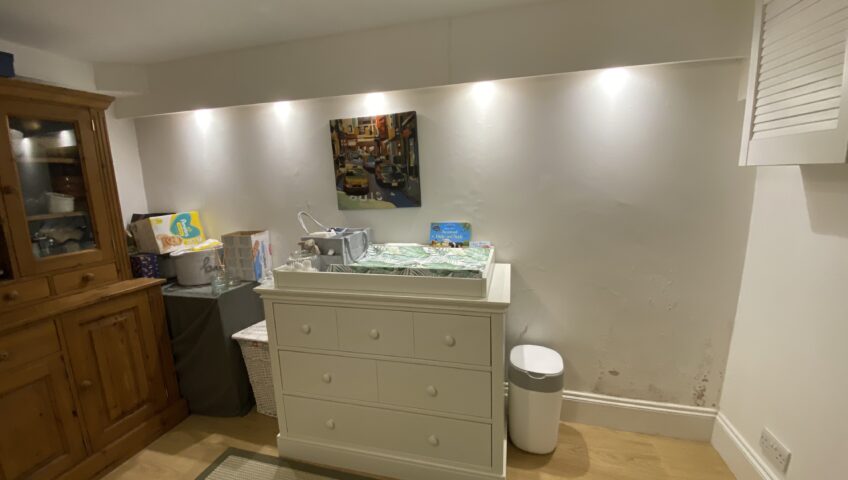
Damp-Proof Courses: Importance and Installation in Preventing Rising Damp
Damp can be a homeowner’s worst nightmare. Whether you’ve just moved into a property or are considering renovations, safeguarding against rising damp is crucial. This is where the damp-proof course (DPC) comes in. Let’s dive into understanding its significance and how you can ensure its correct installation.
What is Rising Damp?
Rising damp is an issue that many homeowners in the UK are familiar with. However, it’s a phenomenon that often doesn’t receive the attention it deserves until it’s too late. So, what exactly is it and why does it matter so much?
What Causes Rising Damp?
Rising damp is caused when groundwater, filled with dissolved salts, travels upward through masonry materials like bricks, mortar, and stone. This occurs due to capillary action, where moisture moves through the small pores in these materials, almost like how a sponge soaks up water.
- Capillary action: The finer the pores in the masonry, the higher the water can rise. So, older bricks, which often have finer pores, can be more susceptible to this issue.
- Absence of a barrier: In the absence of an effective damp-proof course, or if the existing one is damaged, there’s nothing to halt this upward movement of water.
Spotting rising damp early on can prevent larger issues down the line. Some common indicators include:
- Tide marks: These are often seen up to a metre above the skirting board. They are caused by salts left behind as the water evaporates.
- Peeling wallpaper: Moisture can cause wallpaper adhesives to lose their stickiness, leading to sagging or peeling wallpaper.
- Deteriorating plaster: Excess moisture can degrade the quality of plaster, causing it to crumble or flake.
- Salt deposits: As the water rises and evaporates, it leaves behind salts which can appear as white, powdery patches on walls.
If left unchecked, the consequences of rising damp can extend beyond just aesthetic issues:
- Structural degradation: Over time, the integrity of the bricks and mortar can be compromised due to continuous moisture exposure.
- Decreased thermal efficiency: Wet walls don’t insulate and dry ones do. That means your heating bills could rise as you attempt to keep your home warm.
- Unhealthy living environment: Mould and mildew thrive in damp conditions. Exposure to these fungi can lead to health issues, especially in individuals with allergies or asthma.
Certain external factors can exacerbate rising damp:
- Ground levels: If the ground level outside your home is higher than the internal floor level, it can encourage the rise of damp.
- Guttering issues: Poorly maintained gutters or downpipes can cause excess water to collect around your property’s foundations.
- Climate: Wet seasons or prolonged periods of rainfall can increase the likelihood of rising damp, especially in homes with inadequate damp-proofing.
Why Damp Proof Courses Matter
The DPC serves as a barrier, stopping moisture in its tracks. Essentials, it is designed to protect your home from the destructive effects of water from the ground. Having a functional DPC isn’t just about keeping your walls dry; it’s about preserving the structural integrity of your property and ensuring the well-being of its occupants.
- Cost savings: Repairing damage from rising damp can be costly. By preventing it in the first place, you can save a significant amount of money.
- Home value: A home with no damp issues is more attractive to potential buyers and renters.
- Health first: Mould and mildew resulting from damp can cause respiratory issues and allergic reactions.
Installing a Damp Proof Course
When it comes to safeguarding your home from the damages of rising damp, the installation of a damp-proof course (DPC) becomes essential. Ensuring that the DPC is installed with precision and expertise can be the difference between a dry, safe home and a moisture-prone one.
Selecting the Right Material
The effectiveness of a DPC often begins with choosing the appropriate material:
- Bitumen: A popular choice due to its water-repellent properties. It’s often used in the form of a thick paint or a roll of fabric.
- Slate: Favoured in older constructions, slate is both durable and impervious to water. However, sourcing and installation can be quite complex.
- Plastic and PVC: Modern homes often incorporate plastic or PVC DPCs. They are lightweight, effective, and straightforward to install.
- Mastic asphalt: Highly waterproof and durable, mastic asphalt provides a seamless barrier against moisture.
The Importance of Expertise
DIY might seem tempting, but with DPCs, there’s no substitute for professional know-how:
- Correct positioning: Our London Damp Specialist experts can identify the optimal height and location for your DPC to ensure comprehensive protection.
- Integration with current structures: Older homes might have existing, ineffective DPCs or none at all. Professionals will assess the best way to integrate the new DPC seamlessly.
- Handling challenges: Every property is unique, and unforeseen challenges can arise during installation. An experienced installer can navigate these issues effectively.
Why Consistent Height Matters
- Balance: A consistent height ensures that there aren’t any low points for water to breach.
- Effective barrier: A uniform DPC height ensures that all parts of the wall have equal protection.
- Synergy with building design: Matching the DPC height to elements like air bricks ensures they work in tandem to keep damp at bay.
Ensuring the DPC is Placed Above Ground
Though it may seem intuitive, ensuring the DPC is above ground level is paramount:
- Avoiding bypass: If the DPC is at or below the soil or pavement level, it can become ineffective, allowing moisture to easily bypass it.
- Ease of inspection: Having the DPC above ground ensures that it remains visible and accessible for regular checks and maintenance.
- Preserving material integrity: DPC materials, though durable, last longer when not in direct contact with soil or debris.
After Installation
Once you’ve had your DPC installed, it’s not a case of ‘set it and forget it’. Regular checks and maintenance are vital.
- Regular inspections: Examine the area around your DPC regularly. Any signs of moisture or deterioration? It may be time for a professional assessment.
- Keep the area clear: Ensure that the ground level around your home remains below the DPC. Over time, built-up garden waste or soil could render your DPC ineffective.
- Repairs: If you spot any breaches or damage, act quickly. Delaying repairs only gives damp more time to wreak havoc.A damp-proof course isn’t just another addition to your home; it’s a protective shield. Do you need a damp-proof course installation or repair? Contact London Damp Specialists today!

